The Ice Lake Benchmark Preview: Inside Intel's 10nm
by Dr. Ian Cutress on August 1, 2019 9:00 AM EST- Posted in
- CPUs
- Intel
- GPUs
- 10nm
- Core
- Ice Lake
- Cannon Lake
- Sunny Cove
- 10th Gen Core
System Results (15W)
When testing a laptop system, there are various angles to consider on how to test: either user experience benchmarks, that are mostly single threaded and give a good boost to how systems implement a deal of turbo, or sustained benchmarks that test how the system performs when you push it. Intel has gone out of its way to emphasise the former for the next generation of mobile CPUs: they would prefer that reviewers stick to very user experience-like tests, rather than say, rendering programs. The problem there is that outside a number of canned benchmarks, it can be difficult. Users, and especially creators, that typically spend a lot on a premium device, might actually be doing sustained benchmarks.
Given the time that we had to test, we were actually limited in what we could arrange.

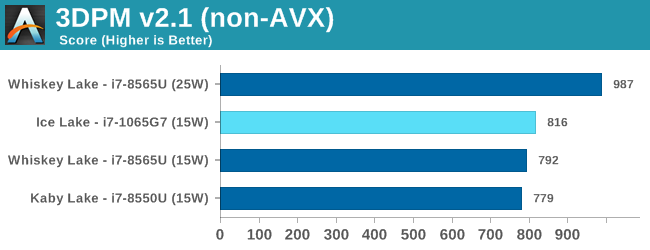

On AVX-512, the Ice Lake part destroys the competition.
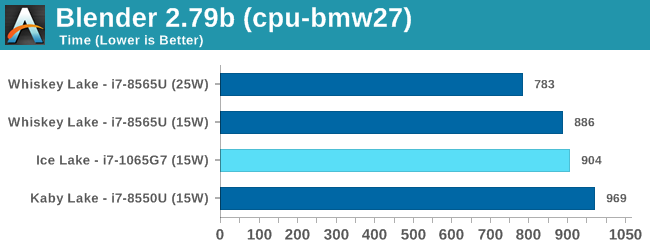
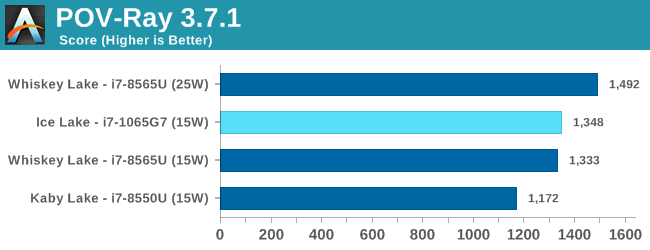


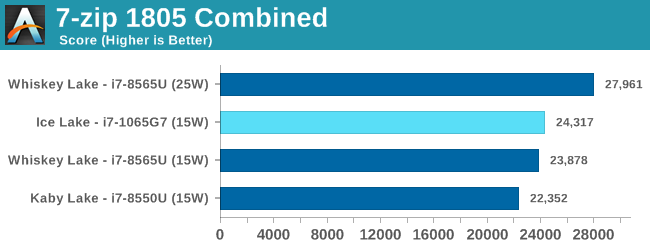
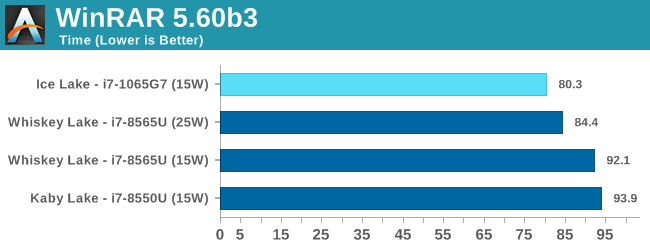
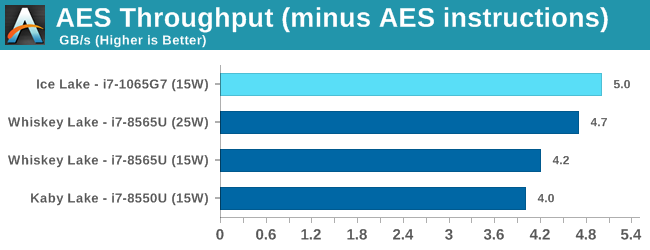
These last two tests are typically our more memory sensitive tests, and the LPDDR4X-3733 really does win out over the LPDDR3-2133 in the other systems.










261 Comments
View All Comments
Xyler94 - Sunday, August 4, 2019 - link
Slower in games, faster in almost everything else (when the R7 1800X came out, the i7 at the time was the i7 7700k)Just like today, the Ryzen 9 3900x is slightly slower in most games (beating it in others) while smashing the i9 9900k in almost any other task. Funny how now we have two CPUs for two different things, huh? Competition is good~
Thunder 57 - Sunday, August 4, 2019 - link
No point in trying to talk sense into a grade A troll. You would think AMD beat him with a belt as a kid or something.Korguz - Friday, August 2, 2019 - link
um HStewart, " Big difference is power difference 0 series are 9V while U is 15/28 and also 28." 9 volts??? again.. do you NOT not know the difference between WATTS and VOLTS ?? i guess by YOUR logic, U uses 15 and 28 VOLTS ????quadibloc - Friday, August 2, 2019 - link
It's easy to focus on AMD and say that the reason Intel didn't do a pure "tick" release this time was because it couldn't afford to pass up any opportunity for improvement in a more competitive environment. But this forgets another factor: during the years of the "tick-tock" strategy, Dennard Scaling was operative, so a process shrink of itself brought a major performance improvement.Now, without Dennard Scaling, even without serious competition from AMD, if Intel had brought out a process shrink without architectural improvements, people would have said "What's the point?".
0ldman79 - Friday, August 2, 2019 - link
Ignore the whiners.Good tech preview.
Looking forward to a full on review.
The SPEC numbers vs the 3900x are pretty insane. Is that single thread or what? Are the benches short enough to run within the max turbo power envelope?
I'm trying to understand how a 15W Ice Lake and 15W Whiskey Lake are comparable to a 9900K or 3900x.
Alistair - Friday, August 2, 2019 - link
Of course it is single threaded (Hence Ian saying words like IPC in that section). There are 0 reasons you'd pick this CPU to compete against the 3900x in multi core workloads.Phynaz - Friday, August 2, 2019 - link
Show me a laptop with a 3900x.Thought so.
Idiot.
Alistair - Saturday, August 3, 2019 - link
Are you dumb? Single core performance is equal, not multicore (it is 1/3 the speed).Xyler94 - Sunday, August 4, 2019 - link
Show me a laptop with an i9 9900ks which can handle the insane tdp it needs.Thought so,
Idiot
R6E7980XE - Saturday, August 3, 2019 - link
“For Sunny Cove this has increased, but it gets a bit more complicated. In one clock Sunny cove can perform 2x64-byte reads and either 1x64-byte write, or 1x32-byte write, or 2x16-byte writes.”@Ian Cuttress Please correct me if I’m remember wrong.
Sunny Cove Microarchitect consisted 2 x 64 Byte / cycle Load and 2 x 64 Byte / cycle Store.
according to https://en.wikichip.org/wiki/File:sunny_cove_block...